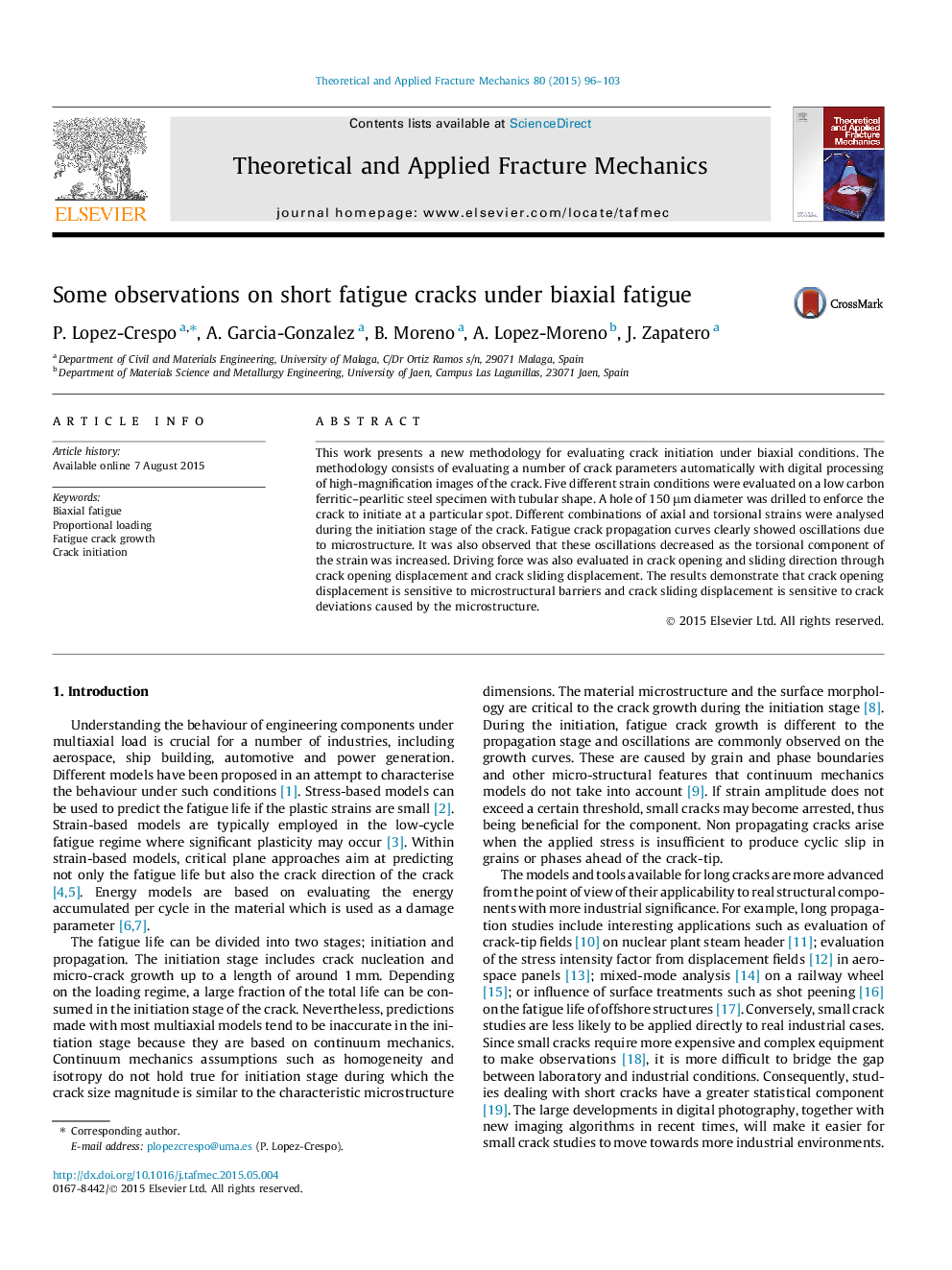| Article ID | Journal | Published Year | Pages | File Type |
|---|---|---|---|---|
| 807022 | Theoretical and Applied Fracture Mechanics | 2015 | 8 Pages |
•New methodology for characterising crack initiation under biaxial loading.•Evaluation with digital processing algorithms and edge-finding routine of crack length, crack angle and crack opening displacement and crack sliding displacement.•Investigation of 5 different proportional loading combinations (tension–compression and torsion).•Short crack oscillations in growth rate decrease with increasing torsional component.•COD captures acceleration and retardation transients.
This work presents a new methodology for evaluating crack initiation under biaxial conditions. The methodology consists of evaluating a number of crack parameters automatically with digital processing of high-magnification images of the crack. Five different strain conditions were evaluated on a low carbon ferritic–pearlitic steel specimen with tubular shape. A hole of 150 μm diameter was drilled to enforce the crack to initiate at a particular spot. Different combinations of axial and torsional strains were analysed during the initiation stage of the crack. Fatigue crack propagation curves clearly showed oscillations due to microstructure. It was also observed that these oscillations decreased as the torsional component of the strain was increased. Driving force was also evaluated in crack opening and sliding direction through crack opening displacement and crack sliding displacement. The results demonstrate that crack opening displacement is sensitive to microstructural barriers and crack sliding displacement is sensitive to crack deviations caused by the microstructure.
